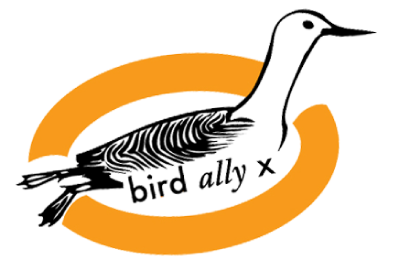 |
| 2012: Contaminated Pelicans await admission exam at HWCC |
Along with our daily work of caring for patients and increasing our capacity at HWCC, Bird Ally X has been working to protect Brown Pelicans from the hazards of this year’s fishing season. The pelicans that hatched in the South are soon to arrive as they leave their nests and disperse North.
Working with California Department of Fish and Wildlife and US Fish and Wildlife Service, BAX has developed educational signs that will be posted at all regional marinas, boat launches and fish processing sites.
We’ve continued to call for alternative methods of disposing of the valuable remains of sport fishers’ cleaned catch, such as composting, soil amendments, etc. Not only does irresponsible disposal of fish “waste” injure and kill pelicans and other seabirds, the act is mindless, thoughtless, careless – an utter disregard of the contribution of the fish.
As it turns it out, discarding all but the fillets of a salmon, or tuna, or rockfish is also akin to throwing away money. Soil amendment companies both locally and beyond the “Redwood Curtain” have need for exactly the kind of nutrients that fish remains provide.
Connecting these businesses with this resource should be easy and mutually beneficial.
 |
| Pelicans in the spray of fish waste, Crescent City 2012 |
So far, there are no clear indications of what might happen this year. The discharge pipe that poured ground fish onto the waiting heads and backs of recently fledged pelicans in Shelter Cove still operates although now the pipe is submerged. It remains to be seen if this will be an effective solution. One thing is clear – it cannot be as effective as simply ending the practice of dumping what Cal EPA regards as sewage into state waters.
November 2012, Crescent City received a $527,000 grant from the Wildlife Conservation Board to build a new, bird safe, fish cleaning station.
Among the factors over which we have no control, the breeding season in Southern California is in jeopardy. 2013 began with an alarming marine mammal die-off lasting until spring, just as Brown Pelicans would be returning to the Channel Islands to breed. Because pelicans rely on the same fish as sea lions (i.e. anchovies) this might bode poorly for this year’s offspring. Without anchovies, pelicans, sea lions and many other species cannot survive.
Last year (2012) only 10 Brown Pelicans fledged from the Channel Islands. Every young of year bird we saw anywhere along the West coast came into the world at the breeding colonies of Baja California. The subsequent disasters that befell these birds as they moved North are a terrible indication of how badly industrial civilization has compromised the California Coast. Harmful algal blooms, disappearing food, both commercial and sport fishing infrastructure, from trawler waste to discarded line – these are serious challenges to Brown pelicans, and all of us.
 |
| The discharge pipe at Shelter Cove, dousing pelicans in gore, 2012. |
A relatively small problem in the landscape of our 21st century environmental nightmare, the infrastructure to handle fish waste on the North Coast is a threat to Brown Pelicans that we can easily solve. Moreover, fish waste is not only a regional problem but one that impacts pelicans and other coastal wildlife throughout California – and everywhere.
Here on the North Coast we have the opportunity to build a model for effective measures that will stop these contaminations. While laws already protect Pelicans and all seabirds, as well as the marine environment, according to a local wildlife biologist, “law enforcement will never see fish waste as deleterious.”
 |
| Pelican with tuna head lodged in throat, 2012. |
In an important court case in Canada, Environment Canada was able to demonstrate that crude fish waste dumped from a tanker was a deleterious substance due to the harm it caused seabirds.
Hopefully, we’ll see this recognition of fish waste’s harmful impact move South to our region.
Humboldt County faces challenging times on many fronts – sea level rise and other local effects of global climate disruption, as well as the more typical push and pull between development and preservation – the list is long and serious… we worry about fish waste while coal ports are planned up and down the West coast! Yet the manageability of this problem is another good reason to solve it quickly.
There is much work to be done. Let’s begin with what is in our reach.
Want to help? Let your local leaders know that you want Pelican Safe Marinas. Your contribution to Bird Ally X goes directly toward supporting our work, caring for injured wildlife – your support makes our work possible. Thank you!
In alliance with Pelicans and all wild animals,
Bird Ally X
























